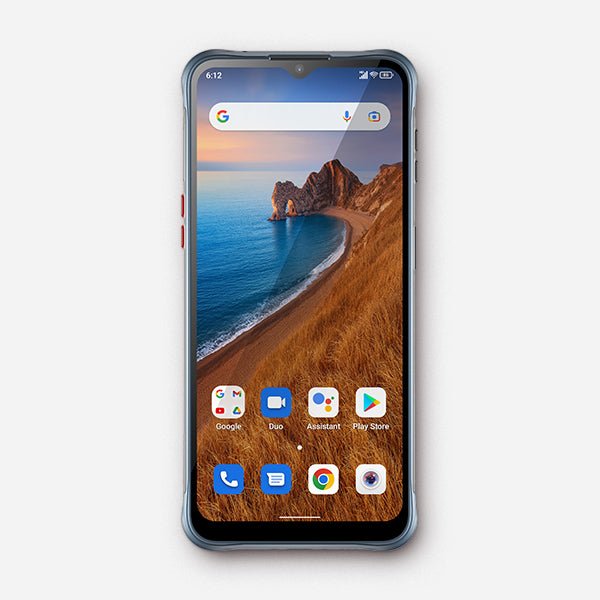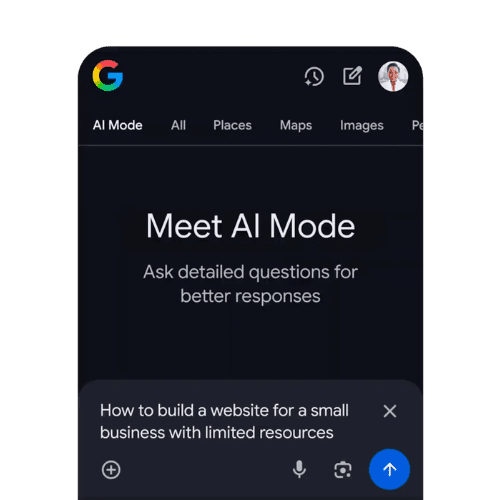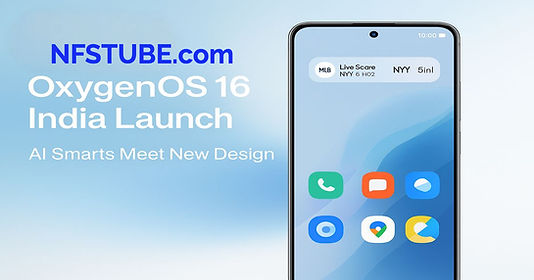
The Next Evolution: How Google Gemini is Redefining the Android Phone Experience
The Dawn of the Truly Smart Phone: An Introduction to Gemini on Android
The landscape of personal technology is undergoing a seismic shift, driven by advancements in artificial intelligence. For years, our smartphones have been powerful tools for communication, productivity, and entertainment, but their intelligence has been largely reactive, responding to direct commands. That era is rapidly coming to a close. The latest and most significant development in this transformation is the deep integration of Google’s most powerful AI model, Gemini, into the core of the Android operating system. This move signals a fundamental change in how we interact with our devices, promising to turn our Android phones from capable assistants into truly proactive, context-aware partners. This article provides a comprehensive technical deep dive into the architecture, real-world applications, and profound implications of Gemini’s integration, exploring how it will reshape the future of the entire ecosystem of Android gadgets and what it means for millions of users worldwide.
Understanding the Shift: From Google Assistant to a Gemini-Powered Future
The integration of Gemini is not merely a rebranding or an incremental update to Google Assistant. It represents a complete paradigm shift in the philosophy behind AI on mobile devices. To appreciate the magnitude of this change, it’s essential to understand the journey from command-based assistants to multimodal, generative AI.
The Limitations of Traditional Voice Assistants
Google Assistant, along with its contemporaries, has been incredibly useful for specific, well-defined tasks. Setting timers, checking the weather, playing a specific song, or answering factual questions are all tasks it handles with ease. However, its capabilities are rooted in a command-and-response structure. It relies on recognizing keywords and executing pre-programmed actions. This model has inherent limitations:
- Lack of Deep Context: Assistant often struggles with conversational context. Each query is treated as a largely independent event, making multi-step, nuanced conversations difficult.
- Limited Modality: It primarily operates on voice and text, with limited understanding of visual information on your screen unless explicitly designed for a feature like Google Lens.
- Reactive Nature: The user must always initiate the interaction with a specific goal in mind. It rarely anticipates needs or offers proactive suggestions based on a holistic understanding of your current activity.
Introducing Gemini: A Multimodal, Natively Integrated AI
Gemini was built from the ground up to overcome these limitations. It is a family of models designed to be natively multimodal, meaning it can seamlessly understand, operate on, and combine different types of information—text, code, audio, images, and video. This capability is the cornerstone of its power on Android phones. The Gemini family consists of several tiers, each optimized for different tasks:
- Gemini Nano: A highly efficient model designed to run directly on-device. This is crucial for tasks that require low latency, offline functionality, and enhanced privacy, as no data needs to leave the phone.
- Gemini Pro: A more powerful model that balances performance and scalability, typically run in the cloud. It handles more complex reasoning, understanding, and generation tasks.
- Gemini Ultra: Google’s most capable model, reserved for the most highly complex and demanding tasks, also accessed via the cloud.
The integration into Android leverages a hybrid approach, using Gemini Nano for instantaneous on-device features while intelligently offloading more demanding requests to Gemini Pro in the cloud, creating a seamless and powerful user experience.
A Technical Deep Dive: The Architecture of Gemini on Android

Bringing the power of a large language model like Gemini to a mobile device without compromising performance or battery life is a monumental engineering challenge. Google’s solution is a sophisticated architecture that combines custom hardware, optimized software, and a clever hybrid processing model.
On-Device vs. Cloud Processing: A Hybrid Approach
The brilliance of the Gemini integration lies in its ability to dynamically choose where to process an AI task. This hybrid model is the key to balancing capability with efficiency.
On-Device with Gemini Nano: For frequent, low-complexity tasks, Gemini Nano is the star. Running locally on the phone’s silicon, it powers features that need to be instant and private. Real-world examples include:
- Gboard Smart Reply: Generating contextually aware reply suggestions directly within your keyboard, without sending your conversation to the cloud.
- Magic Compose in Messages: Rewriting your texts in different styles (e.g., more formal, more concise) happens locally.
- Recorder App Summaries: Creating concise summaries of audio recordings without needing an internet connection.
Cloud-Powered by Gemini Pro: For more complex queries that require vast knowledge or intense computational power, the device seamlessly calls upon Gemini Pro running on Google’s servers. This is used for:
- Creative Writing and Brainstorming: Asking Gemini to draft an email, write a poem, or help plan a trip itinerary.
- Complex Reasoning: Answering multi-part questions that require synthesizing information from various sources.
- Multimodal Analysis: Analyzing a photo of your refrigerator’s contents and suggesting recipes.
The Crucial Role of Custom Silicon: Google Tensor
This hybrid architecture wouldn’t be nearly as effective without specialized hardware. Google’s custom-designed Tensor Processing Units (TPUs), found in its Pixel line of Android phones, are the engine that makes on-device AI possible. Unlike general-purpose CPUs, Tensor chips are specifically architected to handle the complex matrix calculations inherent in machine learning models. This allows Gemini Nano to run incredibly efficiently, minimizing battery consumption and delivering the speed needed for a fluid user experience. This hardware-software synergy is a core part of Google’s strategy and a major piece of ongoing Android News.
Android AICore: The Central Nervous System for AI
To manage these AI models across the operating system and third-party apps, Android now includes a new system service called AICore. Think of it as a central hub for all on-device AI. AICore handles the heavy lifting of managing and updating AI models, allocating hardware resources (like the TPU), and providing a stable, unified API for developers. This means app developers can tap into the power of Gemini Nano without having to bundle the massive model within their own app, saving space and ensuring they are always using the latest, most optimized version provided by the OS.
The Gemini Effect: Transforming Everyday Smartphone Interactions
The technical architecture is impressive, but the true measure of its success is how it transforms the user experience. Gemini is not just a new app; it’s an intelligent layer woven into the fabric of Android, making interactions more intuitive, personal, and powerful.
Contextual Awareness and Proactive Assistance

Gemini’s most significant leap forward is its deep contextual awareness. It understands what’s on your screen, what’s in your apps, and what you’re doing, allowing it to provide assistance that feels magical. Consider these real-world scenarios:
- Scenario 1: Planning a Night Out. You’re in a group chat discussing where to go for dinner. You can invoke Gemini as an overlay on top of the chat. It can read the conversation, understand the preferences mentioned (e.g., “Italian food,” “not too expensive”), search for nearby restaurants that match, and pull up their menus and reviews, all without you ever leaving the messaging app.
- Scenario 2: Visual Search on Steroids. The “Circle to Search” feature is a prime example of Gemini’s multimodal power. While watching a video or browsing a website, you can simply circle an item of clothing, a landmark, or a plant. Gemini instantly analyzes the visual information and provides relevant search results, from where to buy the item to the history of the building.
Supercharging Core Android Applications
Gemini’s intelligence is being infused into the apps you use every day, enhancing them with capabilities that were previously science fiction. This is where users will first notice the tangible benefits:
- Google Photos: The Magic Editor feature uses generative AI powered by Gemini to perform complex edits with simple text prompts. You can move subjects, change the weather from cloudy to sunny, or remove unwanted background objects, and the AI will intelligently fill in the gaps.
- Gmail and Google Docs: “Help me write” features powered by Gemini can take a simple prompt (“Draft a professional email to my team about the new project deadline”) and generate a complete, well-structured draft that you can then refine.
- Android Auto: In the car, Gemini can summarize long incoming texts or group chats and suggest relevant replies, allowing you to stay connected without taking your eyes off the road.
Navigating the New AI Frontier: Challenges and Considerations
The transition to an AI-first operating system is not without its challenges and considerations. As users and developers embrace these new capabilities, it’s important to be aware of the potential pitfalls and best practices.
Privacy and Data Management

The most pressing concern for many users is privacy. The hybrid on-device/cloud model is a direct response to this. By processing sensitive information like message content locally with Gemini Nano, Google minimizes data transmission. However, for more advanced features that rely on Gemini Pro, data is sent to Google’s servers. It is crucial for users to understand and manage their Google Account privacy settings, which allow them to review and delete their Gemini activity. Transparency from Google about what is processed where will be paramount to building and maintaining user trust.
Performance, Battery, and Device Fragmentation
Running sophisticated AI models is computationally expensive. While custom silicon like the Tensor chip mitigates this, there is still a risk of increased battery drain. Optimizing the OS and AICore to manage these processes efficiently is an ongoing challenge. Furthermore, the best Gemini experiences will likely be on high-end Android phones with dedicated AI hardware. This creates a potential fragmentation issue, where users on older or less powerful devices may not have access to the full suite of features. This is a classic Android problem that will be amplified in the AI era.
The Competitive Landscape
Google is not alone in this AI race. Apple has announced its own “Apple Intelligence,” which similarly focuses on a powerful on-device model with a “Private Cloud Compute” option for more complex tasks. Samsung has already integrated “Galaxy AI” (which partially uses Google’s Gemini models) into its devices. This intense competition is great news for consumers, as it will accelerate innovation across the entire industry of smartphones and Android gadgets, pushing each company to deliver more useful and secure AI features.
Conclusion: The Future is Proactive and Personalized
The integration of Google Gemini into Android is more than just the latest tech headline; it’s the beginning of a new chapter for personal computing. We are moving away from a world where we explicitly tell our devices what to do and into one where our devices can understand our context and anticipate our needs. The sophisticated hybrid architecture, combining the privacy and speed of on-device Gemini Nano with the raw power of cloud-based Gemini Pro, provides a robust foundation for this future. While challenges around privacy and performance remain, the potential benefits are immense. For users of Android phones, this means a more helpful, intuitive, and personalized experience, transforming the device in your pocket into a genuine partner in navigating your digital and physical world.



